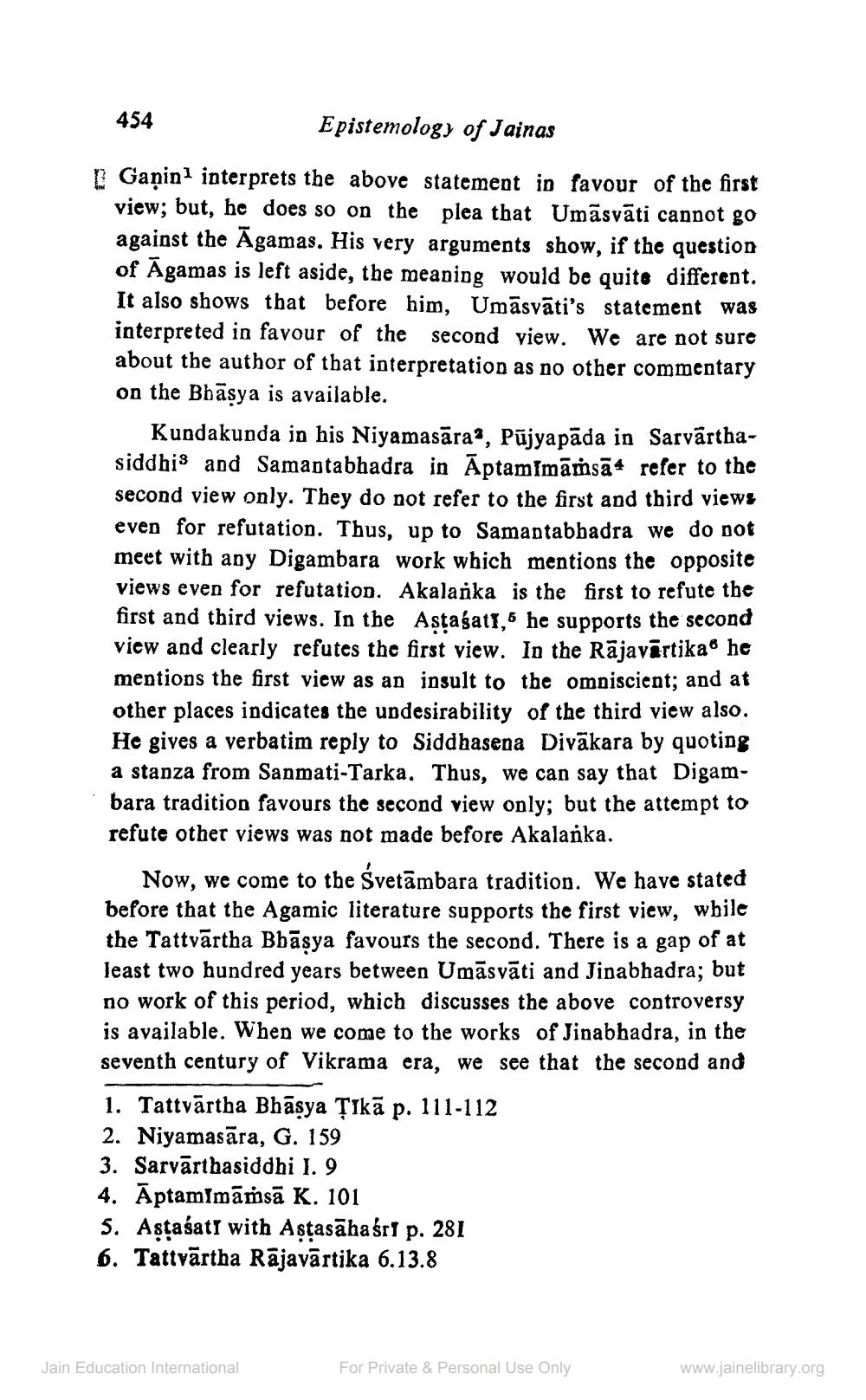________________
454
Epistemology of Jainas
Gasin interprets the above statement in favour of the first view; but, he does so on the plea that Umāsvāti cannot go against the Agamas. His very arguments show, if the question of Āgamas is left aside, the meaning would be quite different. It also shows that before him, Umāsvāti's statement was interpreted in favour of the second view. We are not sure about the author of that interpretation as no other commentary on the Bbāsya is available.
Kundakunda in his Niyamasāra?, Pūjyapāda in Sarvārthasiddhis and Samantabhadra in ĀptamImāmsāt refer to the second view only. They do not refer to the first and third views even for refutation. Thus, up to Samantabbadra we do not meet with any Digambara work which mentions the opposite views even for refutation. Akalarka is the first to refute the first and third views. In the Astasat1,5 he supports the second view and clearly refutes the first view. In the Rājavārtika he mentions the first view as an insult to the omniscient; and at other places indicates the undesirability of the third view also. He gives a verbatim reply to Siddhasena Divākara by quoting a stanza from Sanmati-Tarka. Thus, we can say that Digambara tradition favours the second view only; but the attempt to refute other views was not made before Akalanka.
Now, we come to the Svetāmbara tradition. We have stated before that the Agamic literature supports the first view, while the Tattvārtha Bbāsya favours the second. There is a gap of at least two hundred years between Umāsvāti and Jinabhadra; but no work of this period, which discusses the above controversy is available. When we come to the works of Jinabhadra, in the seventh century of Vikrama era, we see that the second and 1. Tattvārtha Bhāsya Țikā p. 111-112 2. Niyamasāra, G. 159 3. Sarvārthasiddhi I. 9 4. ĀptamImāṁsā K. 101 5. Astašati with Astasābaśrt p. 281 6. Tattvārtha Rājavārtika 6.13.8
Jain Education International
For Private & Personal Use Only
www.jainelibrary.org




